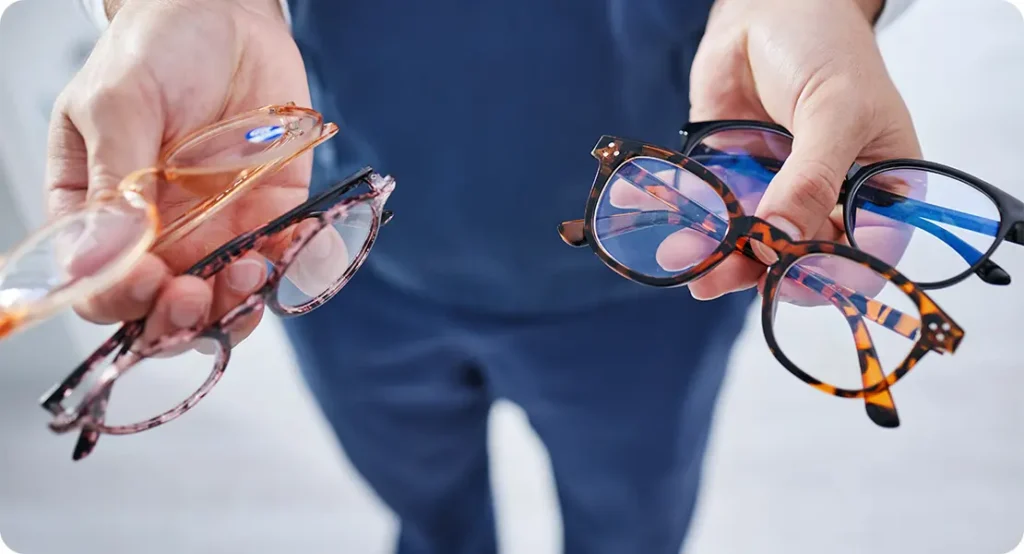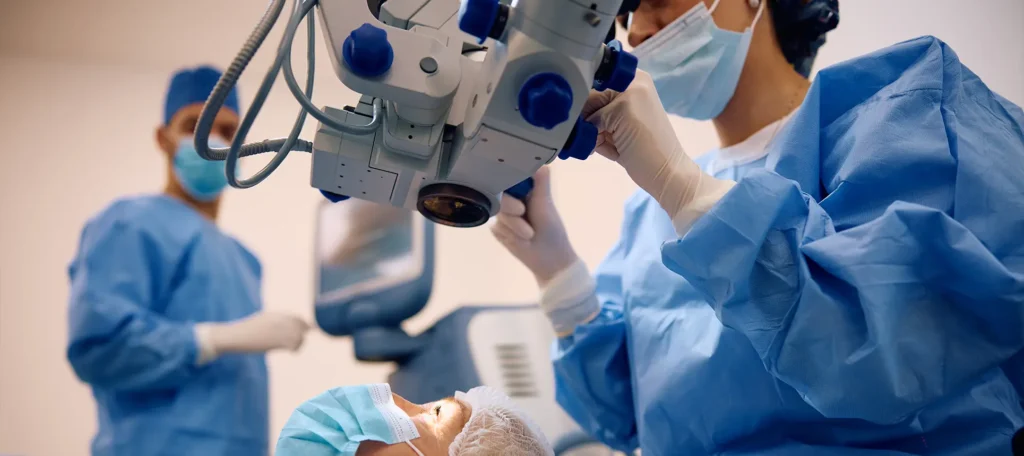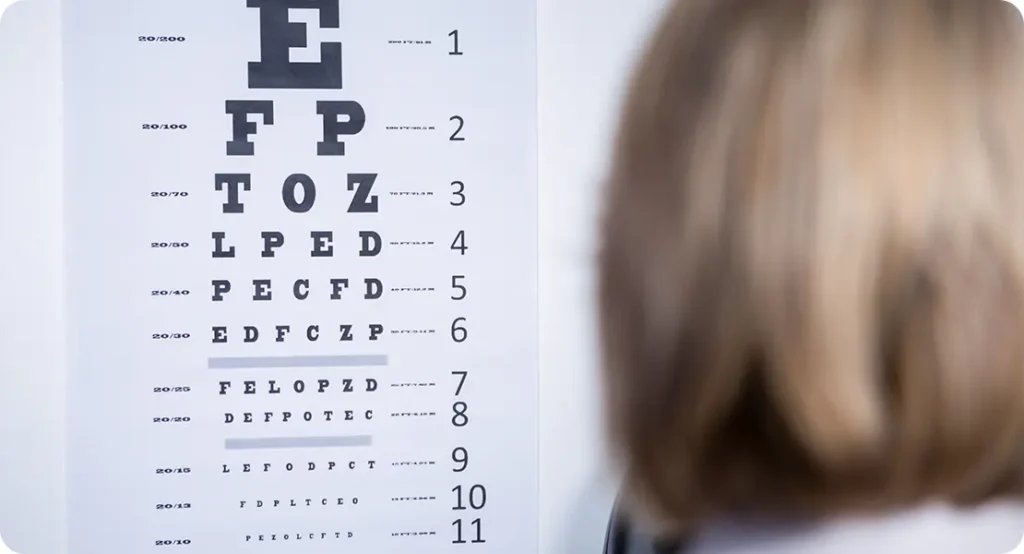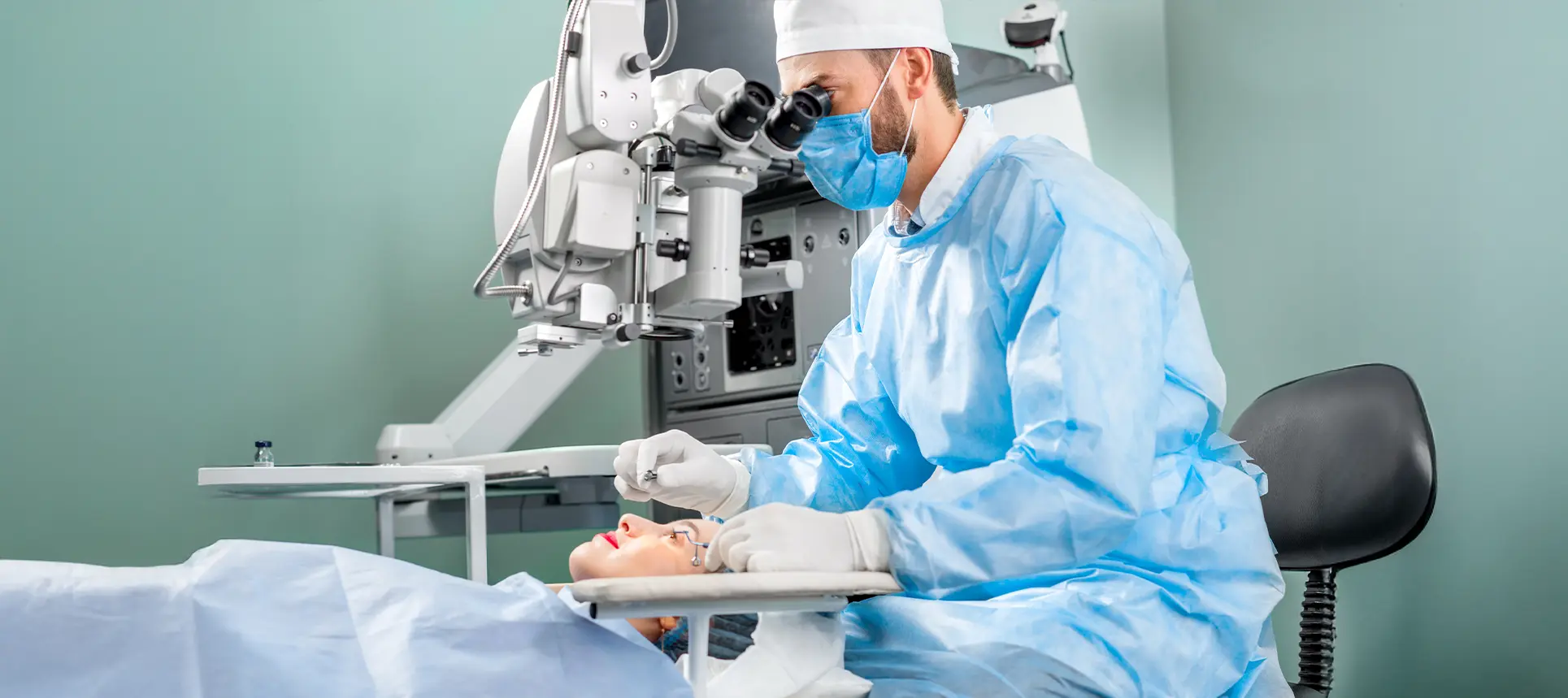When it comes to cataract surgery, one of the most important decisions you’ll make is the type of intraocular lens (IOL) to have implanted. While there are several options available, monofocal lenses remain the most commonly used and widely trusted. But naturally, many patients have questions about them. So, let’s walk through 15 of the most frequently asked questions cataract surgeons hear from patients considering monofocal lenses.
1. What exactly is a monofocal lens?
A monofocal lens is a type of artificial lens implanted during cataract surgery to replace the eye’s natural lens once it becomes cloudy. Unlike multifocal lenses, which can correct vision at multiple distances, monofocal lenses are designed to focus clearly at just one fixed distance—usually either near, intermediate, or far. This means you’ll typically need glasses for tasks that fall outside that chosen range.
The most common choice with monofocal lenses is to have them set for distance vision. That way, you can enjoy clear sight for driving or watching TV, but you’ll still need reading glasses for things like using your phone or reading a book. Some patients opt for near vision instead, especially if close-up work is a priority in their lifestyle.
It’s worth knowing that although these lenses don’t correct all distances, they do offer excellent visual clarity at the chosen focus point. They’re also the most widely studied and time-tested option available. For many, they strike the perfect balance between performance, safety, and cost.
So, in simple terms, a monofocal lens does one job, and it does it well. It’s a straightforward, reliable choice that works beautifully when you know what your visual priorities are and you’re okay with using glasses for certain tasks.
2. Why would I choose a monofocal lens over a multifocal one?
This question comes up often, especially since multifocal lenses are heavily marketed as offering “glasses-free” vision. The decision really comes down to lifestyle needs, budget, and how your eyes respond to different types of lenses. Monofocal lenses offer clarity at one distance, and that simplicity actually comes with a few key advantages.
First, monofocal lenses tend to have fewer visual disturbances compared to multifocal ones. Things like glare, halos around lights, and difficulty seeing in dim conditions are generally less common. If you do a lot of night driving or struggle with low-light vision, this can be a big selling point.
Second, they’re often the best choice for people who already have other eye conditions like macular degeneration or diabetic retinopathy. These conditions can interfere with the way your brain interprets multiple focus points, which makes the clarity of a monofocal lens much more suitable.
Lastly, there’s the cost factor. Monofocal lenses are typically included in standard NHS cataract surgery, whereas multifocal lenses are often only available privately and at a higher cost. If your budget is a consideration, a monofocal lens gives you excellent results without the premium price tag.
3. Will I still need glasses if I choose monofocal lenses?
In short, yes—most people who go with monofocal lenses still rely on glasses for some tasks. As these lenses correct vision at just one fixed distance, they can’t provide clear sight across all ranges. If your lens is set for distance, you’ll likely need reading glasses. If it’s set for near work, then glasses may be needed for driving or watching television.

However, some people manage very well with what’s known as monovision. That’s where one eye is fitted with a lens for distance and the other for near. It’s not for everyone, as it can affect depth perception and take time to adjust to. But for certain patients, this approach reduces their dependence on glasses significantly.
Even with glasses, many patients find that their overall quality of vision improves dramatically after surgery. Colours appear brighter, things seem sharper, and everyday tasks become more enjoyable. So even though you might still need specs, the improvement in clarity can be well worth it.
It’s also important to remember that your prescription for glasses may change after surgery. So don’t rush to buy new glasses straight away—give your eyes time to heal, and let your surgeon advise you on when it’s best to get tested.
4. Are monofocal lenses covered by the NHS?
Yes, monofocal lenses are the standard option provided during cataract surgery on the NHS. They’re considered a clinically effective and cost-efficient solution for restoring vision. So, if you’re eligible for NHS surgery, you won’t need to pay extra for a monofocal lens—it’s all part of the treatment.
That said, the NHS generally only provides monofocal lenses aimed at improving distance vision. If you want anything more specialised, such as a multifocal or toric lens, you’d typically need to explore private surgery, where additional costs apply. But for most patients, especially those who don’t mind using glasses, the standard monofocal lens works just fine.
The process through the NHS is also very streamlined. Your optometrist refers you, you’re assessed by an ophthalmologist, and once you’re on the surgical list, everything from the lens to the surgery itself is covered. It’s one of the many benefits of having a national health service.
If you’re considering private options, it’s always good to have a discussion about what you’re paying for. Sometimes, the added cost brings only a small improvement for your specific case. Your ophthalmologist can guide you through what makes the most sense for your eyes and your lifestyle.
5. How long do monofocal lenses last?
Monofocal lenses are designed to be permanent. Once implanted, they don’t wear out, degrade, or need replacing under normal circumstances. They’re made from highly durable materials like acrylic or silicone, which are biocompatible—meaning they’re safe to remain in your eye for the rest of your life.
In fact, unless you develop a separate eye condition unrelated to the cataract surgery, there’s no reason your monofocal lens wouldn’t last your entire lifetime. It becomes a fixed part of your eye, securely held in place by the lens capsule that once held your natural lens. This makes for a very stable setup, both physically and visually.
Now, some people notice blurry vision again months or years after surgery, which can be confusing. This is usually due to something called posterior capsule opacification (PCO), where the capsule behind the lens becomes cloudy. It’s not the lens itself changing—just the membrane around it.
Fortunately, PCO is easily treated with a quick laser procedure called YAG capsulotomy, which restores clear vision in a matter of minutes. So while the lens itself doesn’t wear out, the surrounding tissue can sometimes need a little maintenance.
6. What vision can I expect with a monofocal lens?
What you’ll get is clear, crisp vision at the distance your lens was set for—most commonly distance vision. So, you can expect to see road signs, people’s faces, and the TV screen much more clearly. However, unless you opt for monovision, you’ll still need glasses for reading or computer work.
Many patients are delighted with how colours appear brighter and sharper after surgery. That’s partly because cataracts can cause a yellowish tint to your vision without you realising it. Once that cloudy lens is gone and replaced with a clear one, everything seems to pop again.

That said, your final visual result depends on other factors too—like the overall health of your eyes, the accuracy of your lens measurements before surgery, and whether you have astigmatism. If you do, you may need glasses for sharper clarity even at your chosen focal distance.
Surgeons are pretty accurate these days with getting the lens power right, especially if your eye measurements are straightforward. But do expect some minor variability, and keep in mind that perfect vision without glasses is rare unless you’re lucky or opt for additional corrective treatments.
7. Can monofocal lenses correct astigmatism?
Standard monofocal lenses aren’t designed to correct astigmatism, which is a curvature irregularity in the cornea that causes blurry or distorted vision. If you have moderate to high astigmatism, you might still need glasses even for distance tasks after surgery. That’s why your surgeon will assess your level of astigmatism before making a recommendation.
However, there is a specific type of monofocal lens called a toric lens that is designed to correct astigmatism. It works in the same way as a regular monofocal lens but has added features to neutralise the uneven curvature in your cornea. The result is sharper, more balanced vision at your chosen focal distance.
The catch? Toric lenses often fall under the umbrella of premium lenses and may not be available on the NHS, depending on where you’re being treated. If you’re going private, it’s something worth considering if your astigmatism is significant enough to impact your results.
Even if you do stick with a standard monofocal lens, some people find that mild astigmatism doesn’t bother them much, or that glasses can easily correct any residual blur. Your eye surgeon will walk you through what makes sense for your eyes specifically.
8. Is the surgery different with a monofocal lens?
The actual surgery to implant a monofocal lens is exactly the same as standard cataract surgery. It’s a quick, minimally invasive procedure that usually takes around 10 to 15 minutes. The cloudy natural lens is removed using ultrasound and replaced with the artificial lens through a tiny incision.
The only difference really comes in the planning. Your surgeon will use precise measurements of your eye to calculate the ideal lens power for your chosen focal distance. This step is critical for getting the best possible visual outcome with a monofocal lens.

During surgery, the monofocal lens is folded up and inserted through a small incision. It then unfolds and is positioned in the exact spot where your natural lens used to sit. The incision is so small it usually seals itself without stitches.
Afterwards, the recovery process is the same as with any standard cataract operation. Most people notice an improvement in vision within a few days, with full healing expected within 4 to 6 weeks. So, in short—there’s nothing extra or complicated about the surgery just because a monofocal lens is being used.
9. What’s the recovery like with a monofocal lens?
Recovery after cataract surgery with a monofocal lens is usually smooth and quick. You’ll likely notice an improvement in your vision within the first 24 to 48 hours. For some people, things seem clearer the very next day. That said, your eye will still be healing internally, even if it feels fine.
You’ll be given eye drops to use for a few weeks to prevent infection and reduce inflammation. It’s important to use them exactly as prescribed and not to skip doses, even if your eye feels normal. You’ll also have follow-up appointments to check how your eye is healing and whether your vision is progressing as expected.
During recovery, you should avoid rubbing your eyes, heavy lifting, or any activities that might put pressure on your eye. Most people return to their usual daily routine fairly quickly, but your surgeon will give you specific advice based on your job or hobbies.
It’s worth noting that glasses should not be ordered until your vision has stabilised—typically around 4 weeks post-op. This ensures that the prescription is accurate and based on your new visual needs after surgery.
10. Can I choose the distance my monofocal lens is set for?
Yes, you can. During your consultation, your surgeon will ask you about your lifestyle, daily tasks, and visual preferences to help determine which distance is best for you. Most people opt for distance vision in both eyes, but you do have the choice to go with near or intermediate instead if that suits your needs better.
The idea is to tailor the focus point of the lens to the activities you do most. For example, if you’re an avid reader or do lots of sewing, you might prefer to set one or both lenses for close vision and use glasses for driving. On the other hand, if you’re outdoorsy or do a lot of driving, setting them for distance might make more sense.

There’s also the option of monovision, where one eye is corrected for distance and the other for near. This can reduce your need for glasses but does take some getting used to. Surgeons often recommend trying monovision with contact lenses first to see if your brain adapts well before committing to it surgically.
Ultimately, the decision is yours, but it’s made with expert guidance. Your surgeon will consider the shape of your eye, your past prescriptions, and any existing visual conditions before making a final recommendation that supports your lifestyle.
11. Do monofocal lenses work well in both eyes?
They work beautifully in both eyes, and that’s the most common setup for patients having cataract surgery. Implanting monofocal lenses in both eyes gives a consistent and stable visual experience, particularly when both are set to the same focal distance—usually for far vision.
When both eyes are focused at the same distance, your brain receives matching visual signals, making it easy to process what you’re seeing without discomfort or imbalance. This is ideal for things like driving, walking around, or watching TV, where clarity at distance is important.
Some people do opt for a bit of a mix with monovision, as we’ve mentioned earlier, but for most patients, having both eyes corrected to the same distance keeps life simple. It allows your eyes to work together naturally, and depth perception tends to be better when both lenses are matched.
You should also know that many patients have surgery on one eye first, then wait a few weeks before doing the second. This staged approach allows for assessment of the first eye’s outcome before confirming the lens settings for the second, which can further fine-tune your visual result.
12. Can monofocal lenses be exchanged if I’m not happy?
Technically, yes—monofocal lenses can be removed and replaced if absolutely necessary, but it’s not something done lightly. Lens exchange surgery carries higher risks than the original cataract operation, so it’s usually reserved for rare cases where the outcome is truly unsatisfactory or there’s a major lens-related issue.
If you’re simply unhappy with the vision, the first step is always a detailed eye exam to understand why. It might be due to something as simple as residual refractive error that can be corrected with glasses or a laser procedure. Other times, issues like dry eye or PCO can make things appear blurry, but these can often be treated without touching the lens.
In a small number of cases, the lens power may have been misjudged or your eye measurements may have been off. If glasses or enhancements don’t help, and you’re still struggling significantly, your surgeon might consider a lens exchange. This is especially true if the lens isn’t sitting correctly or is causing constant visual disturbances.
But overall, these situations are quite rare. The majority of patients adapt well to their monofocal lenses, especially once the brain has had time to adjust. If you do have concerns, it’s important to speak up early so your care team can help you troubleshoot.
13. Are there any side effects with monofocal lenses?
As with any medical procedure, there are potential side effects, but monofocal lenses are known for being very well tolerated. The most common early side effects include mild eye irritation, light sensitivity, or seeing floaters. These usually settle within a few days to weeks.
One thing some patients report is a temporary feeling of imbalance or dizziness, especially if only one eye has had surgery so far. This often improves once the second eye is treated or once new glasses are worn to balance the vision between both eyes.
As we touched on earlier, posterior capsule opacification (PCO) can also occur months or even years after surgery. It’s a clouding of the capsule behind the lens and can make vision feel as though the cataract has returned. Thankfully, this is treated quickly and painlessly with a laser.
Serious complications like infection or retinal detachment are extremely rare, especially when the surgery is performed by an experienced team. Following your post-op instructions and attending your follow-ups is key to catching any concerns early and ensuring a smooth recovery.
14. Will the lens affect how colours appear?
Yes, and in a good way! One of the unexpected delights of having a monofocal lens is how much more vibrant the world can seem afterwards. Cataracts often develop so slowly that people don’t realise how much their vision has dulled. Colours may take on a yellow or brownish hue, and brightness fades without you noticing.
Once the cloudy lens is removed and replaced with a clear monofocal one, many patients are amazed at how bright, white, and crisp everything looks. Blues become more vivid, whites look truly white again, and the overall contrast of your surroundings improves significantly.
It can feel a bit overwhelming at first—some people even say things look “too bright” in the early days after surgery, especially if only one eye has been treated. But your brain soon adjusts to the enhanced clarity and colour perception, and most people grow to love the improvement.
This improved colour perception isn’t just cosmetic. It makes everyday life easier—from picking ripe fruit at the supermarket to matching socks. It also contributes to better depth perception and safer mobility, especially in lower lighting.
15. Can I fly after having a monofocal lens implanted?
Yes, you absolutely can fly after cataract surgery with a monofocal lens—but with a few precautions. Most surgeons recommend waiting at least a week before flying, just to make sure everything is healing well and that no complications have arisen in the immediate post-op period.
If you’re planning a short-haul trip, it’s usually fine after a few days, provided your follow-up checks have gone well. For long-haul flights, the main concern is avoiding dry eyes, which can be made worse by cabin air. Bring lubricating drops with you, and try not to rub your eyes while on the plane.

You’ll also want to avoid lifting heavy luggage or getting water in your eyes, especially if you’re still within that first week of recovery. Pack your eye drops in your carry-on bag, and keep using them as prescribed throughout your trip.
The golden rule is to make sure your eye has been checked before you go. If your follow-up appointment shows that everything is healing properly, there’s usually no reason to cancel or postpone travel plans. Just take it easy, follow your surgeon’s advice, and let your eyes recover at their own pace.
Final Thoughts
Monofocal lenses might not be flashy or high-tech, but they’re the reliable, no-nonsense choice that millions of people trust every year. They give you dependable, clear vision at a set distance, with fewer side effects and fewer compromises than some of the fancier options. And while they don’t eliminate the need for glasses completely, they can make a huge difference in your daily life.
Ultimately, the right lens choice is about what works best for you—not just what’s new or expensive. If you’re after simplicity, safety, and proven results, monofocal lenses are hard to beat. Pair that with expert guidance from your surgeon, and you’re well on your way to seeing the world with fresh eyes.
So, whether you’re just starting to explore cataract surgery or you’ve already got a date booked, don’t underestimate the value of a good monofocal lens. It might just be the clearest decision you’ll ever make—literally and figuratively.
If you’ve got more questions, be sure to bring them up at your consultation. The more informed you are, the more confident you’ll feel going into the procedure. And that’s the key to a smooth, successful outcome.

